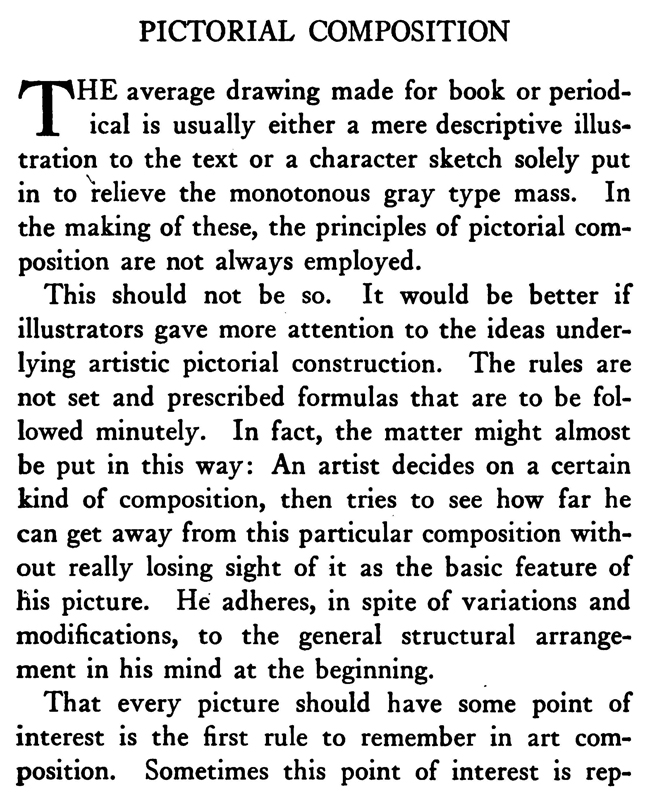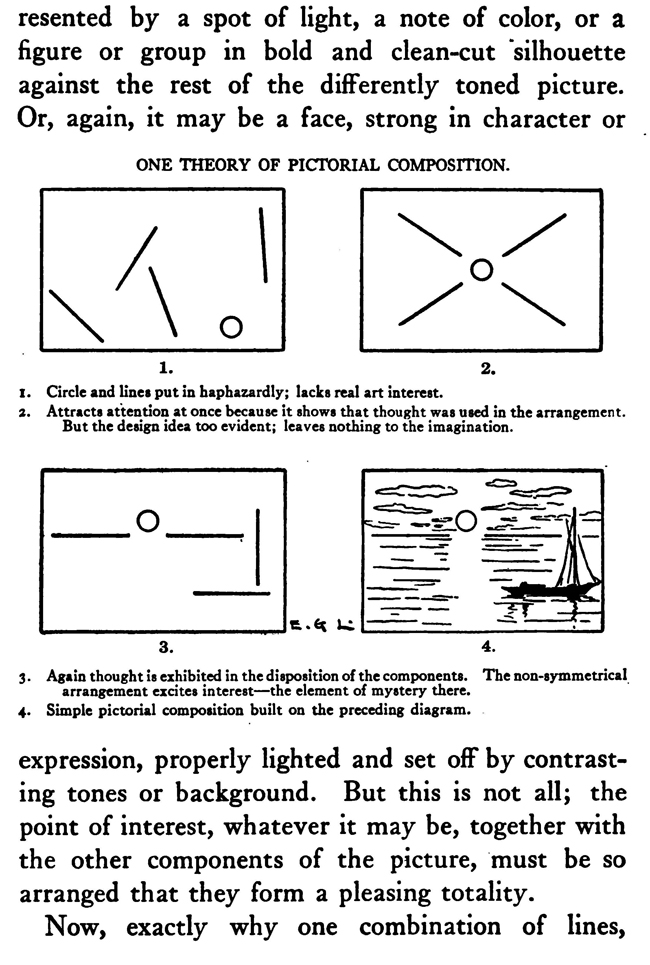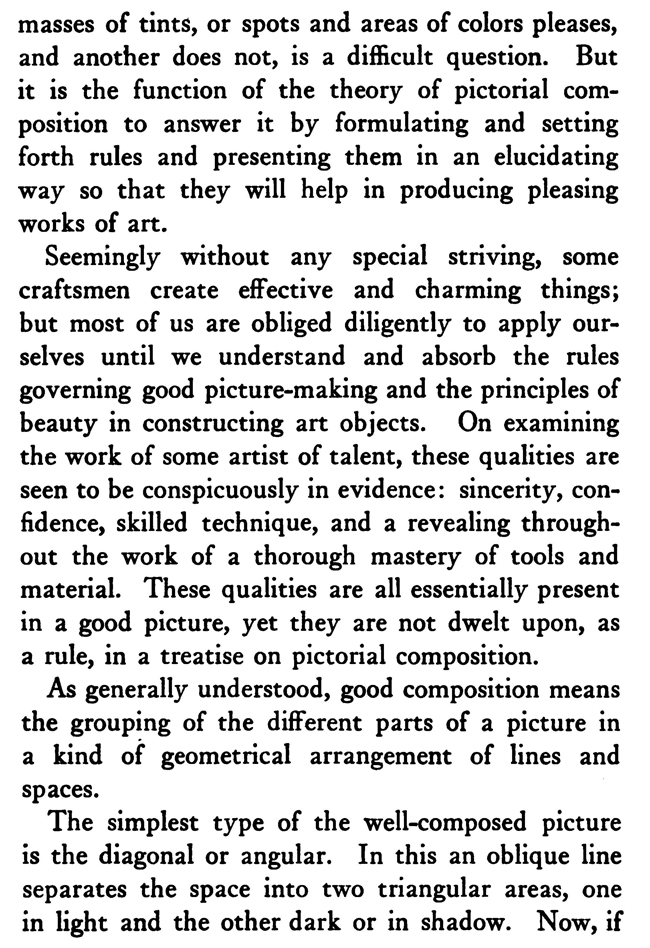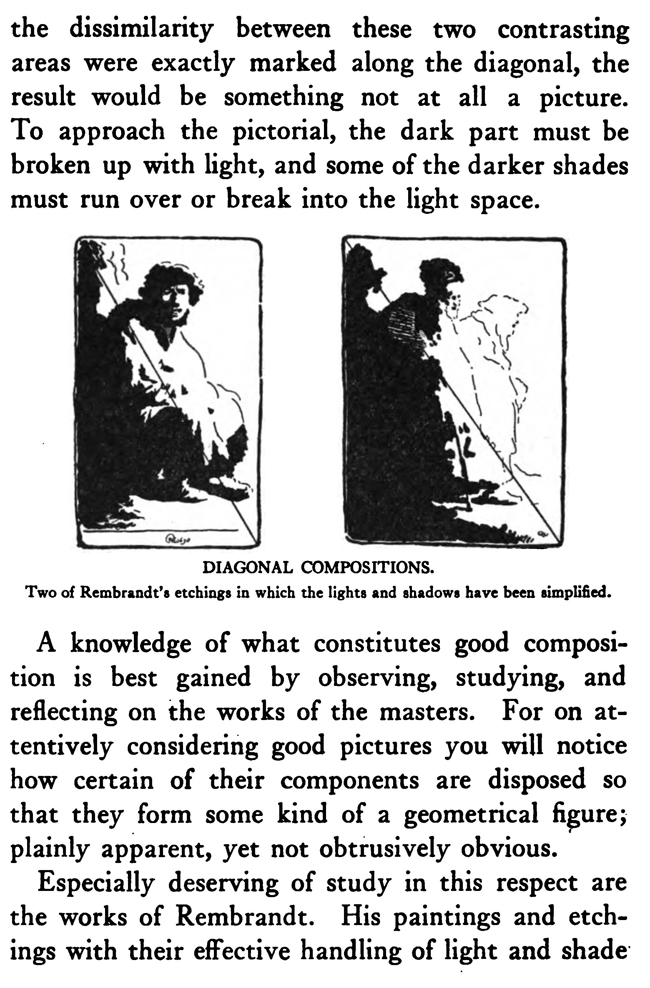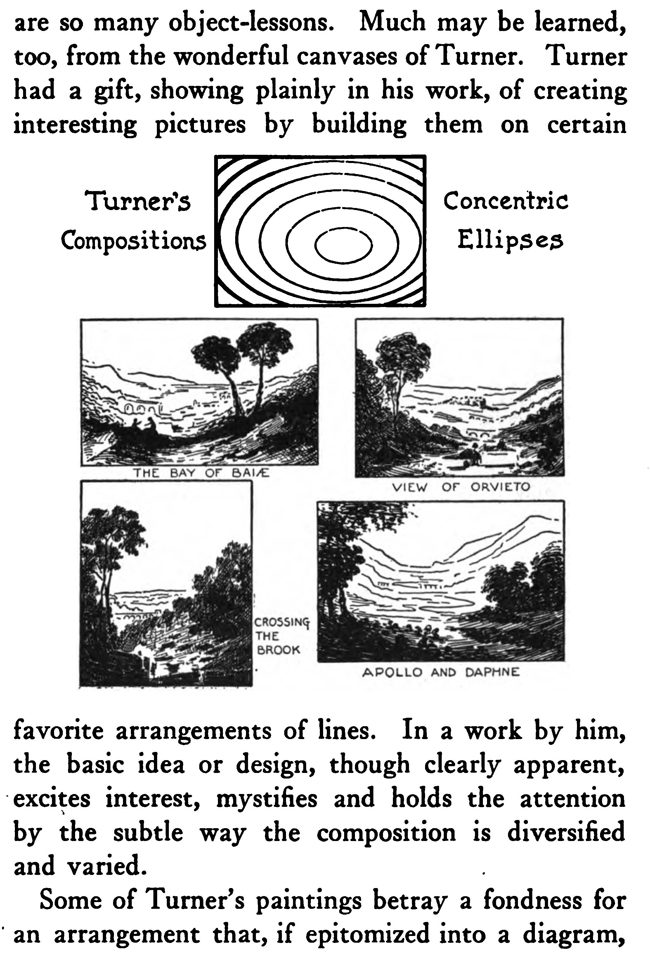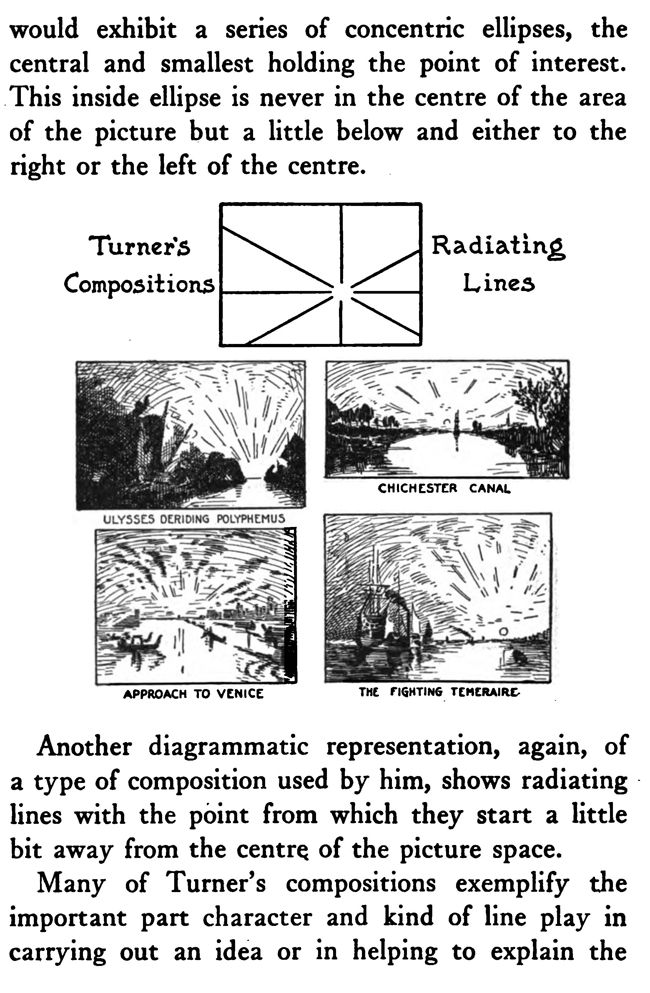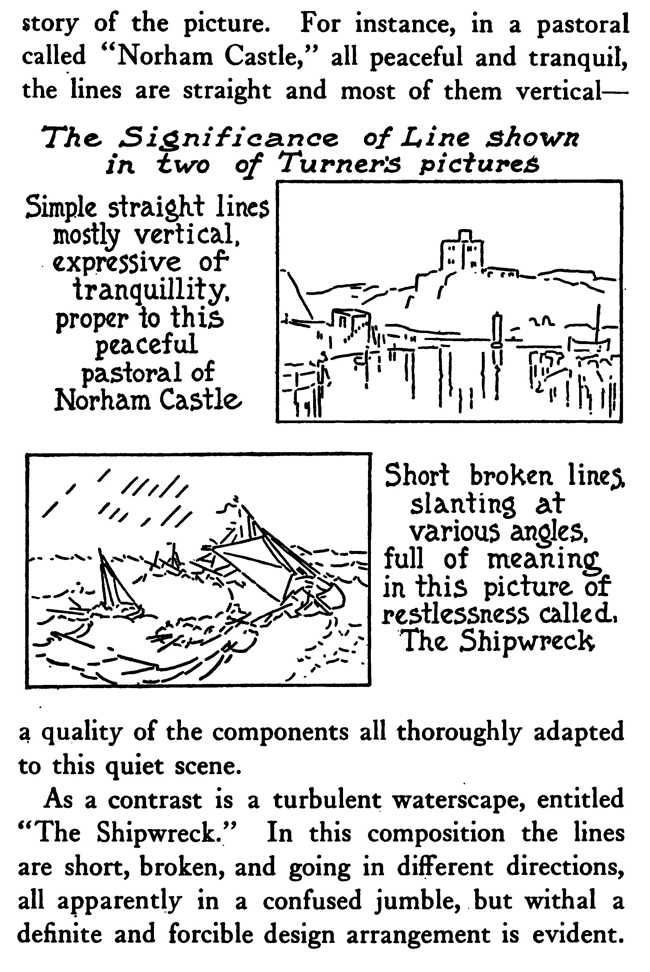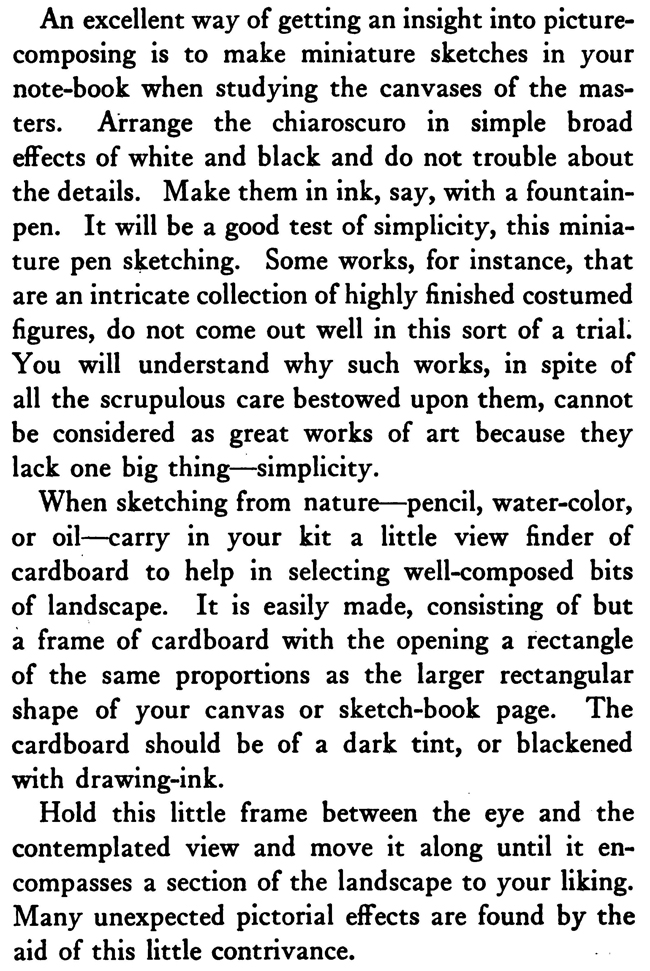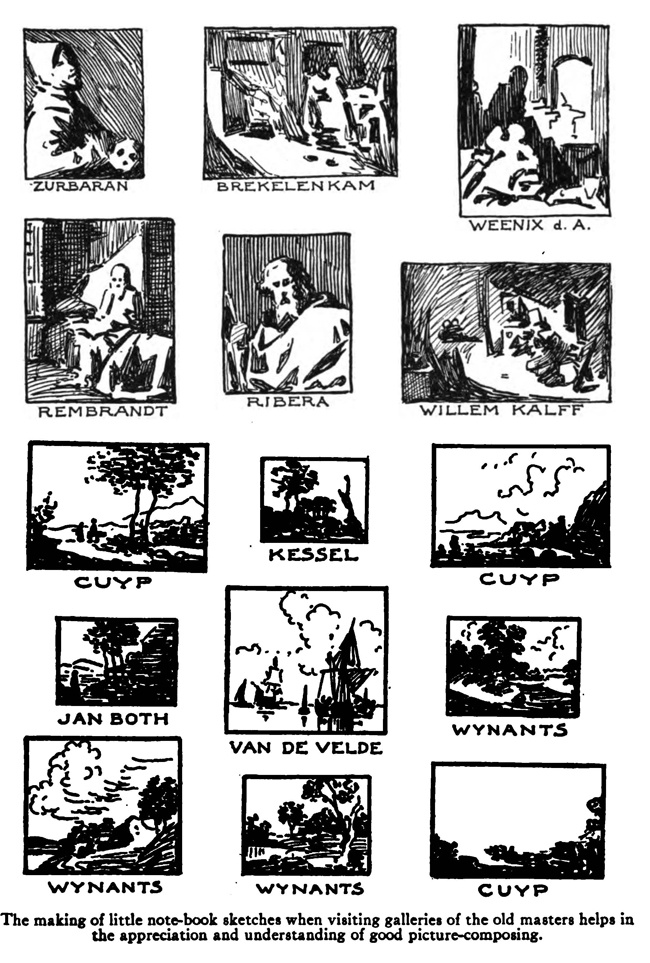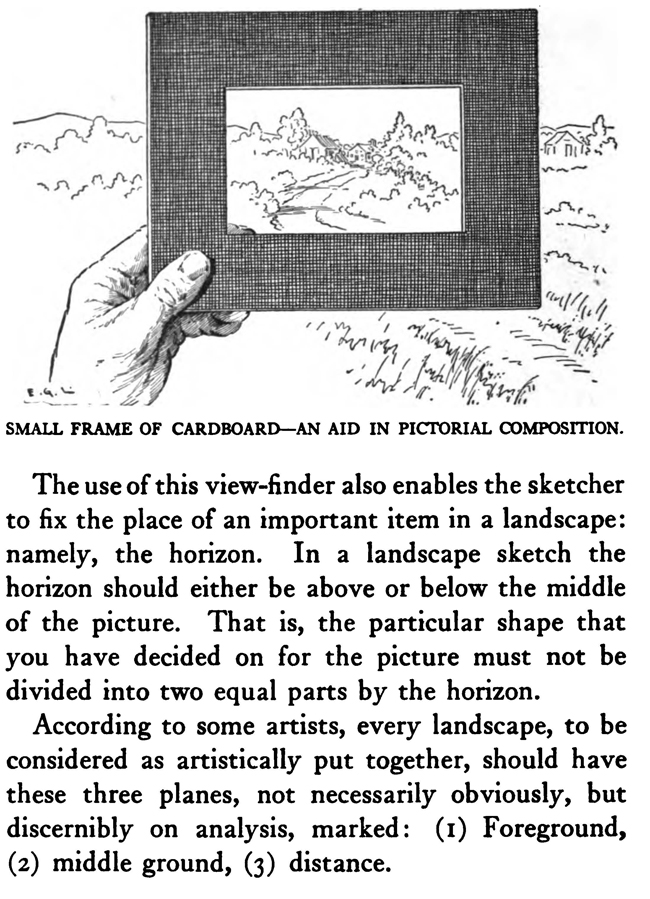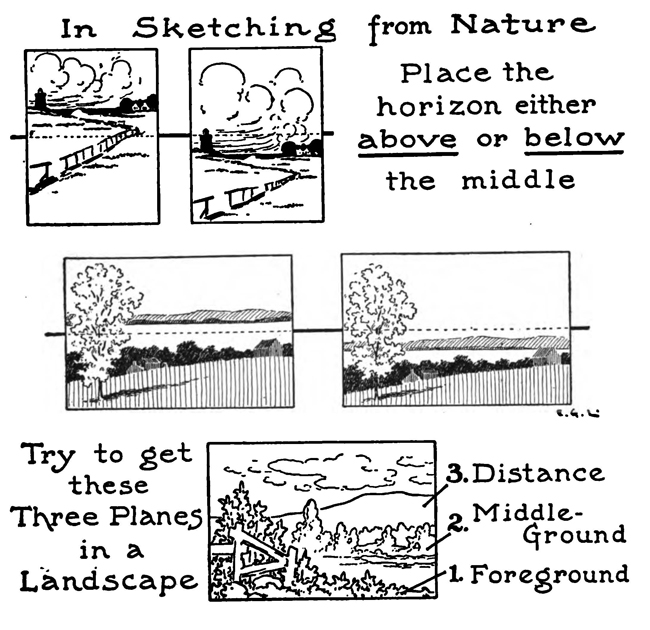Home > Directory of Drawing Lessons > Art Principles & Elements > Art Composition > Theories Behind Beautiful Art Compositions
THOERIES BEHIND BEAUTIFUL PICTORIAL ART COMPOSITIONS : How to Layout and Arrange Elements in Your Artwork to Draw Beautiful Drawings
|
|
The text above is actually made up of images, so if you need to copy any text, you will find it below. Thank you. PICTORIAL COMPOSITIONThe average drawing made for book or periodical is usually either a mere descriptive illustration to the text or a character sketch solely put in to relieve the monotonous gray type mass. In the making of these, the principles of pictorial composition are not always employed. This should not be so. It would be better if illustrators gave more attention to the ideas underlying artistic pictorial construction. The rules are not set and prescribed formulas that are to be followed minutely. In fact, the matter might almost be put in this way: An artist decides on a certain kind of composition, then tries to see how far he can get away from this particular composition without really losing sight of it as the basic feature of his picture. He adheres, in spite of variations and modifications, to the general structural arrangement in his mind at the beginning. That every picture should have some point of interest is the first rule to remember in art composition. Sometimes this point of interest is represented by a spot of light, a note of color, or a figure or group in bold and clean-cut 'silhouette against the rest of the differently toned picture. Or, again, it may be a face, strong in character or expression, properly lighted and set off by contrasting tones or background. But this is not all; the point of interest, whatever it may be, together with the other components of the picture, must be so arranged that they form a pleasing totality. Now, exactly why one combination of lines, masses of tints, or spots and areas of colors pleases, and another does not, is a difficult question. But it is the function of the theory of pictorial composition to answer it by formulating and setting forth rules and presenting them in an elucidating way so that they will help in producing pleasing works of art. Seemingly without any special striving, some craftsmen create effective and charming things; but most of us are obliged diligently to apply ourselves until we understand and absorb the rules governing good picture-making and the principles of beauty in constructing art objects. On examining the work of some artist of talent, these qualities are seen to be conspicuously in evidence: sincerity, confidence, skilled technique, and a revealing throughout the work of a thorough mastery of tools and material. These qualities are all essentially present in a good picture, yet they are not dwelt upon, as a rule, in a treatise on pictorial composition. As generally understood, good composition means the grouping of the different parts of a picture in a kind of geometrical arrangement of lines and spaces. The simplest type of the well-composed picture is the diagonal or angular. In this an oblique line separates the space into two triangular areas, one in light and the other dark or in shadow. Now, if the dissimilarity between these two contrasting areas were exactly marked along the diagonal, the result would be something not at all a picture. To approach the pictorial, the dark part must be broken up with light, and some of the darker shades must run over or break into the light space. DIAGONAL COMPOSITIONS.Two of Rembrandt's etchings in which the lights and shadows have been simplified. A knowledge of what constitutes good composition is best gained by observing, studying, and reflecting on the works of the masters. For on attentively considering good pictures you will notice how certain of their components are disposed so that they form some kind of a geometrical figure; plainly apparent, yet not obtrusively obvious. Especially deserving of study in this respect are the works of Rembrandt. His paintings and etchings with their effective handling of light and shade are so many object-lessons. Much may be learned, too, from the wonderful canvases of Turner. Turner had a gift, showing plainly in his work, of creating interesting pictures by building them on certain favorite arrangements of lines. In a work by him, the basic idea or design, though clearly apparent, excites interest, mystifies and holds the attention by the subtle way the composition is diversified and varied. Some of Turner's paintings betray a fondness for ' an arrangement that, if epitomized into a diagram, would exhibit a series of concentric ellipses, the central and smallest holding the point of interest. This inside ellipse is never in the centre of the area of the picture but a little below and either to the right or the left of the centre. Another diagrammatic representation, again, of a type of composition used by him, shows radiating lines with the point from which they start a little bit away from the centre of the picture space. Many of Turner's compositions exemplify the important part character and kind of line play in carrying out an idea or in helping to explain the story of the picture. For instance, in a pastoral called "Norham Castle," all peaceful and tranquil, the lines are straight and most of them vertical—a quality of the components all thoroughly adapted to this quiet scene. As a contrast is a turbulent waterscape, entitled "The Shipwreck." In this composition the lines are short, broken, and going in different directions, all apparently in a confused jumble, but withal a definite and forcible design arrangement is evident.
An excellent way of getting an insight into picture-composing is to make miniature sketches in your note-book when studying the canvases of the masters. Arrange the chiaroscuro in simple broad effects of white and black and do not trouble about the details. Make them in ink, say, with a fountain-pen. It will be a good test of simplicity, this miniature pen sketching. Some works, for instance, that are an intricate collection of highly finished costumed figures, do not come out well in this sort of a trial. You will understand why such works, in spite of all the scrupulous care bestowed upon them, cannot be considered as great works of art because they lack one big thing—simplicity. When sketching from nature—pencil, water-color, or oil—carry in your kit a little view finder of cardboard to help in selecting well-composed bits of landscape. It is easily made, consisting of but a frame of cardboard with the opening a rectangle of the same proportions as the larger rectangular shape of your canvas or sketch-book page. The cardboard should be of a dark tint, or blackened with drawing-ink. Hold this little frame between the eye and the contemplated view and move it along until it encompasses a section of the landscape to your liking. Many unexpected pictorial effects are found by the aid of this little contrivance. The use of this view-finder also enables the sketcher to fix the place of an important item in a landscape: namely, the horizon. In a landscape sketch the horizon should either be above or below the middle of the picture. That is, the particular shape that you have decided on for the picture must not be divided into two equal parts by the horizon. According to some artists, every landscape, to be considered as artistically put together, should have these three planes, not necessarily obviously, but discernibly on analysis, marked : (I) Foreground, (z) middle ground, (3) distance. |
Privacy Policy ...... Contact Us





